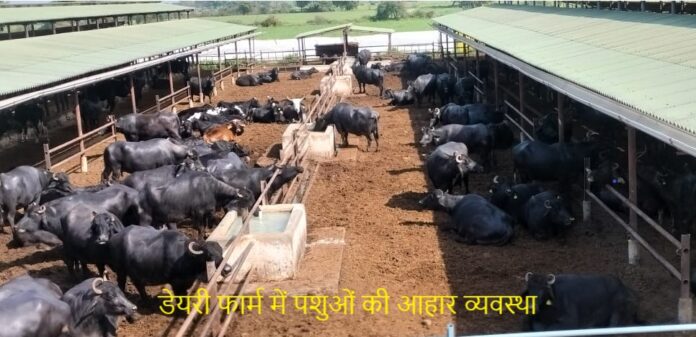LOW PRODUCTIVITY OF INDIAN DAIRY ANIMALS: CHALLENGES & MITIGATION STRATEGIES
Mathivathani C
Assistant Professor,
Department of Veterinary Parasitology,
Rajiv Gandhi Institute of Veterinary Education and Research, Puducherry
Email: mathivathani.c@river.edu.in
Introduction:
India’s dairy industry stands as a pillar of its agricultural economy, yet it grapples with a critical issue: the suboptimal productivity of its dairy animals. Despite the nation’s rich diversity of cattle breeds and buffaloes, challenges abound, hindering their full potential. From genetic limitations to nutritional deficits and healthcare barriers, each obstacle poses a formidable barrier to achieving optimal milk production. Understanding these challenges is paramount to devising effective strategies for improvement. In this article, we delve into the multifaceted challenges that impede the productivity of Indian dairy animals, shedding light on the path towards sustainable solutions and enhanced productivity in this vital sector.
Understanding the Challenges:
- Genetic Limitations:Indian dairy animals, primarily indigenous cattle breeds like Gir, Sahiwal, and Murrah buffaloes, possess valuable traits such as heat tolerance and disease resistance. However, their genetic potential for milk production is often lower compared to exotic breeds.
- Nutritional Deficiencies:Inadequate nutrition remains a significant hurdle in maximizing dairy animal productivity. Many small-scale farmers lack access to quality feed, leading to suboptimal milk yields and poor animal health.
- Healthcare Constraints:Disease outbreaks and inadequate veterinary care further exacerbate productivity challenges. Endemic diseases like mastitis and foot-and-mouth disease take a toll on animal health and milk production, contributing to economic losses for farmers.
- Management Practices:Traditional farming methods and limited awareness about modern management practices hinder productivity enhancement efforts. Issues such as poor housing conditions, improper breeding techniques, and inefficient milking procedures impede dairy animal performance.
Mitigation Strategies:
- Genetic Improvement Programs:Implementing selective breeding programs to enhance the genetic potential of indigenous breeds can significantly boost milk production. Crossbreeding with high-yielding exotic breeds like Holstein Friesian and Jersey can introduce superior milk traits while retaining indigenous adaptability.
- Genetic improvement programs aim to enhance the milk-producing potential of indigenous cattle breeds and buffaloes.
- Selective breeding initiatives focus on identifying superior animals with desirable traits and promoting their reproduction.
- Crossbreeding programs introduce genetic diversity by mating indigenous breeds with high-yielding exotic breeds.
- The goal is to combine the adaptability of indigenous breeds with the high milk yields of exotic breeds.
- Breeding programs prioritize traits such as milk production, disease resistance, and heat tolerance.
- Genetic selection techniques, including genomic selection and marker-assisted breeding, aid in identifying desirable traits.
- Government agencies, research institutions, and dairy cooperatives collaborate to implement and monitor genetic improvement programs.
- Capacity building initiatives educate farmers on the importance of selective breeding and assist them in selecting superior breeding stock.
- Long-term genetic improvement efforts contribute to sustainable increases in milk production and overall herd quality.
- Continuous monitoring and evaluation ensure the effectiveness and relevance of genetic improvement programs in addressing the challenges of low productivity in Indian dairy animals.
- Promotion of Nutritional Interventions:Encouraging the adoption of balanced diets and supplementation programs can address nutritional deficiencies in dairy animals. Government initiatives and private-sector collaborations can provide farmers with access to quality feed, fodder, and nutritional supplements at affordable prices.
- Enhanced Healthcare Services:Strengthening veterinary healthcare infrastructure and outreach programs is essential to control diseases and improve animal welfare. Vaccination drives, regular health check-ups, and training programs for farmers on disease prevention and management can mitigate health-related productivity losses.
- Capacity Building and Technology Adoption:Empowering farmers with knowledge about modern dairy farming techniques through training and extension services is crucial. Introducing cost-effective technologies such as automated milking systems, improved breeding methods, and efficient farm management practices can enhance productivity and profitability.
- Capacity building programs empower farmers with knowledge and skills in modern farming techniques and management practices.
- Training sessions focus on breeding methods, nutrition, and disease management to optimize animal health and productivity.
- Technology adoption introduces innovations like automated milking systems, precision technologies, and biotechnological advancements.
- Automated milking systems reduce labor and improve efficiency, benefiting small-scale farmers.
- Precision technologies enable farmers to optimize feed formulations and monitor animal health in real-time.
- Biotechnological advancements, such as embryo transfer and sexed semen technology, enhance genetic potential.
- Remote sensing and GIS technologies aid in precision agriculture for optimal resource allocation.
- Mobile applications and digital platforms provide access to market information and veterinary services.
- Collaborations between research institutions, government agencies, and private enterprises drive innovation and technology dissemination.
- Policy support, investment in rural infrastructure, and gender-inclusive initiatives are vital for fostering widespread adoption of technology and enhancing productivity in the dairy sector.
Conclusion:
In confronting the challenges of low productivity among Indian dairy animals, we unveil not only the complexities but also the opportunities for transformation. By embracing genetic enhancement programs, nutritional interventions, and strengthened healthcare services, India can empower its dairy farmers to unlock the latent potential of their animals. Moreover, through the adoption of modern technologies and the dissemination of knowledge, a new era of productivity and prosperity beckons for the dairy sector. Let us envision a future where Indian dairy animals thrive, contributing not only to the nation’s food security but also to the economic empowerment of millions. Together, let us forge ahead, catalyzing change and innovation, as we embark on a journey towards a more resilient, efficient, and sustainable dairy industry for generations to come.



